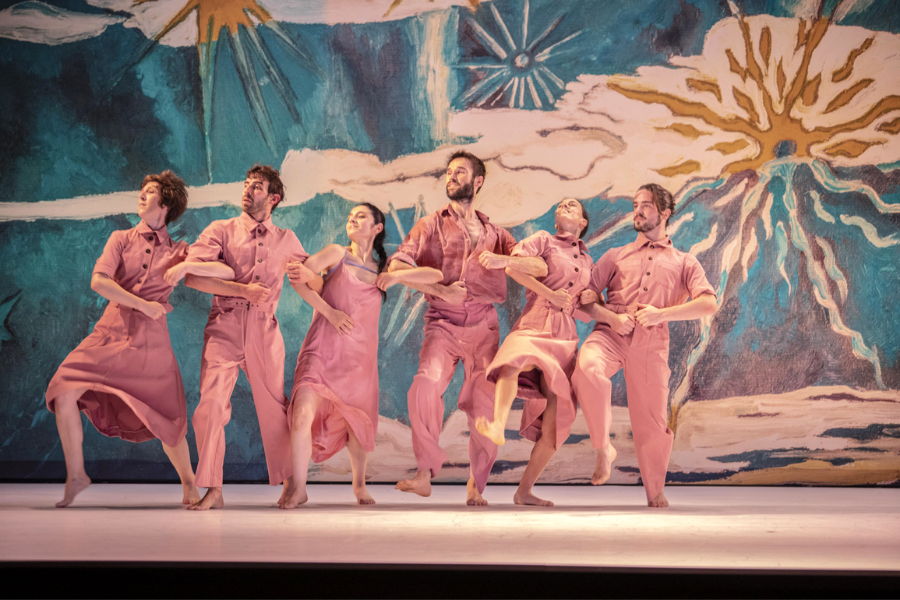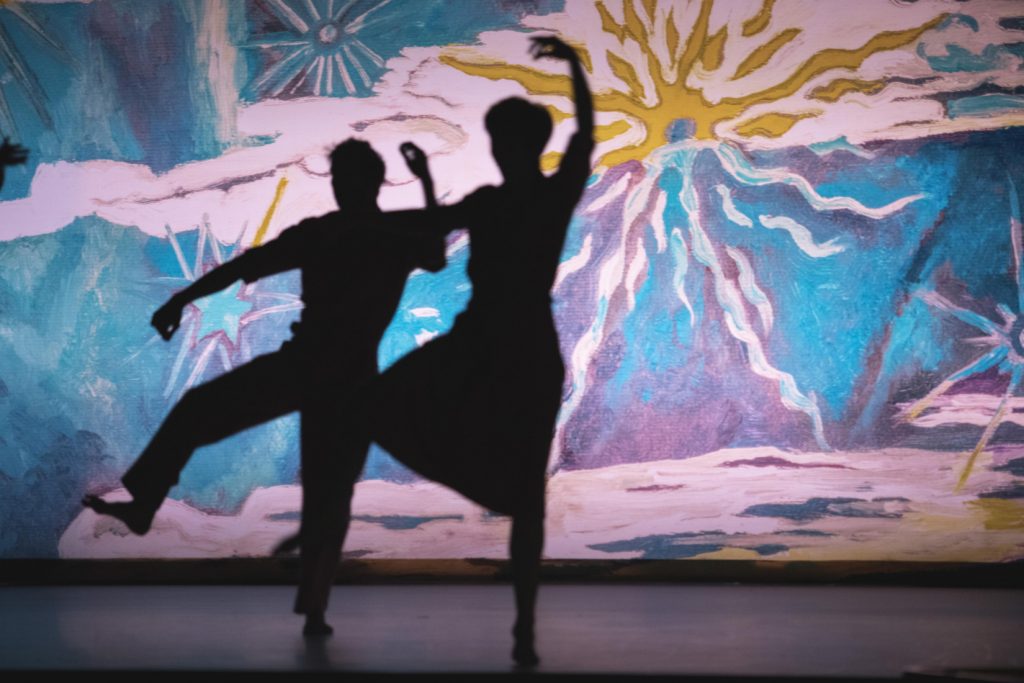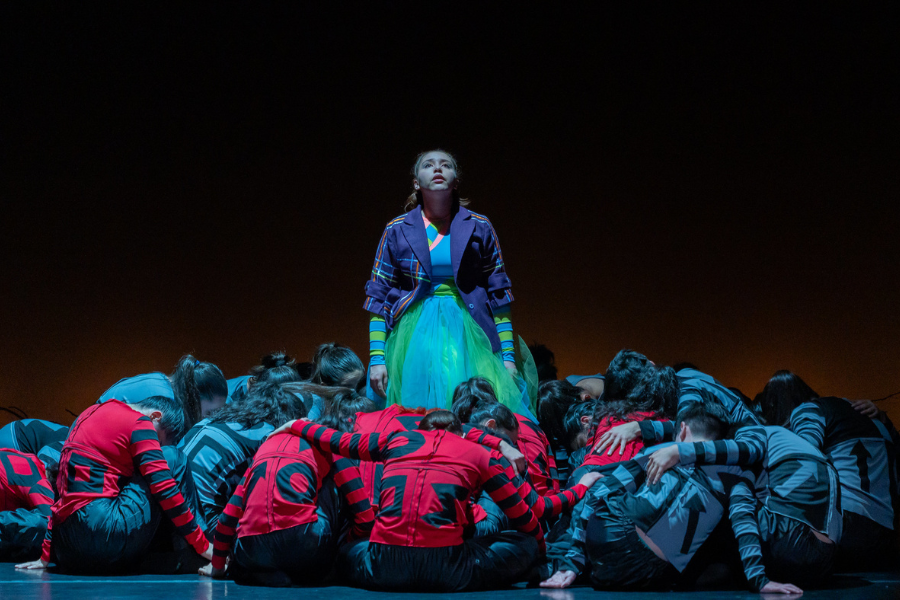El Liceu presenta ‘La noche de San Juan’ de Robert Gerhard, un nuevo espectáculo con coreografía de Antonio Ruz y coproducido con la Fundación Juan March

La noche de San Juan es un ballet inédito con música de Robert Gerhard, argumento de Ventura Gassol y escenografía de Joan Junyer. La obra, compuesta por representarse en Barcelona entre 1936 y 1939, no se estrenó debido a la Guerra Civil. Ochenta años más tarde de su creación, el Liceu, en coproducción con la Fundación Juan March, recuperan esta obra con un nuevo espectáculo de danza firmado por el reconocido coreógrafo Antonio Ruz, abierto a todos los públicos y edades y que se presentará por primera vez en Barcelona del 8 al 10 de octubre.
El Gran Teatre del Liceu presenta el 8 d’octubre en el Foyer la producción La noche de San Juan (Soirées de Barcelone), ballet con música de Robert Gerhard, escenografía de Joan Junyer y argumento de Ventura Gassol que quedó inédito en 1939 por los avatares de la Guerra Civil. La obra se había creado al calor del furor dancístico de principios del siglo XX, con el trasfondo de la imagen europea de una España exótica y del arrasador éxito que Falla había conquistado en este ámbito. El exilio de todos los creadores que participaron en su gestación provocó el olvido de esta extraordinaria composición.
Más de ochenta años después de su creación, la Fundación Juan March, en coproducción con el Gran Teatre del Liceu, recuperan este ballet. Uno de los bocetos originales de la escenografía de Junyer ha sido reproducido, sus figurines han evocado el diseño del vestuario y una nueva coreografía de Antonio Ruz reemplaza la original de Léonide Massine, de la que no se conserva ningún apunte. Para este proyecto, la Fundación Juan March y el Gran Teatre del Liceu han contado con la colaboración del bailarín y coreógrafo Antonio Ruz, quien, en el texto que escribe para las notas al programa de la producción, destaca, entre los motivos que le han llevado a aceptar el encargo “el hecho de que sea un proyecto de recuperación de repertorio olvidado, las coyunturas históricas desfavorables para que su estreno nunca se llevase a cabo, la constelación de grandes artistas que lo componen y el contexto de los Ballets Russes de Monte-Carlo y el bailarín y coreógrafo Léonide Massine de corte modernista, que bebe de ritos y danzas populares, como en algunos ballets de Stravinsky».
La interpretación musical corre a cargo del pianista Miguel Baselga, quien parte de la versión original para piano de Gerhard. Los decorados son reproducciones de los bocetos originales realizados por Joan Junyer, quien también realizó figurines, que conservó y llegó a exponer en la muestra Art in Progress del Museum of Modern Art (MoMA) de Nueva York. La iluminación corre a cargo de Olga García y el vestuario, basado en los figurines originales, lo firma Rosa García Andújar.
Espectáculo para todos los públicos
Después de estrenarse el pasado junio en la Fundación Juan March, la obra se podrá ver por primera vez en Barcelona del 8 al 10 de octubre. El domingo 10 de octubre a las 11h, el Liceu programa una función familiar del mismo espectáculo, una oportunidad única para los más pequeños para disfrutar de una propuesta de danza onírica y mágica.
Argumento
Basado en el guion de Ventura Gassol, el argumento de La noche de San Juan se sitúa en Isil, una pequeña localidad del Pirineo leridano cercana a la frontera con Francia. Coincidiendo con el solsticio estival y la festividad de San Juan, el lugar acoge las Fallas de Isil, ceremonia de culto al fuego y su sentido purificador de origen ancestral.
El primer cuadro del ballet (titulado “Los fuegos”) se inicia en la víspera de San Juan. Coincidiendo con el crepúsculo, los aldeanos observan cómo los jóvenes del pueblo, conocidos como fallaires, descienden por la montaña (La multitud). Antorchas en mano, los jóvenes entran al pueblo en procesión acompañados de enanos y diablos (Procesión – Danza de los enanos) hasta desembocar en la plaza con una danza embriagadora en la que participan todos (Meleì: la multitud baila con los enanos). Las majorales, encargadas de organizar la fiesta, les dan la bienvenida (Danza de las ‘majorales’). Se inicia entonces una competición entre los jóvenes, que van lanzando enormes troncos en llamas a la hoguera en medio de la plaza (Los portadores de antorchas). Beatas y majorales premian al ganador con un ramo de albahaca, la planta del amor, y ofrecen a los demás una copa de vino que todos beben siguiendo un rito antiguo (Danza del vencedor y Galantería). Tañen las campanas mientras se abren las puertas de la iglesia, y sale un cortejo formado por enanos y autoridades que contemplan una frenética danza del fuego protagonizada por los diablos alrededor de la hoguera (Danza de los ‘fallaires’). Embriagados todos los habitantes del pueblo, este ritual da por iniciadas las fiestas de la noche de San Juan.
En el segundo cuadro (“Eros”), el encantamiento del fuego y el misterio de la noche extasían a la muchedumbre, que abandona la plaza silenciosamente (Nocturno). Los jóvenes amantes, seducidos por el amor, se adentran por parejas en un bosque brumoso lleno de seres fantásticos (Danza de la seducción). El travieso Cupido entra en acción (Aparición de Cupido) y la sensualidad se apodera de la pareja de amantes, que cae en un sueño profundo. Los duendes, druidas y ninfas que pueblan el bosque cortejan a los enamorados dormidos y crean una singular confusión entre el mundo mágico y la realidad, aumentada por la penumbra misteriosa de la noche (Danza de los espiìritus – Las ninfas – Los duendes). Con los primeros rayos del sol, las parejas son despertadas del plácido sueño del amor por los severos ancianos y los notarios, antes de ser arrastradas hasta el pueblo (Los ancianos con los faroles). Al final de la procesión puede distinguirse a Cupido, que sonríe con ironía satisfecho por el éxito de su acción (Las parejas y los ancianos).
El último cuadro (“La boda”) se inicia con el alba al despuntar el nuevo día. La plaza del pueblo estaì iluminada por un sol matinal y muestra un ambiente de fiesta. Las puertas de la iglesia se abren y dan paso al cortejo nupcial con diablos, enanos, casados, ancianos, notarios y autoridades. Comienza el Fandanguillo de los recién casados, mientras en el rosetón de la iglesia puede verse a Cupido. Al terminar la danza, Cupido advierte que se trata de las mismas parejas sorprendidas en el bosque la noche anterior por los ancianos y los notarios, y rompe a carcajadas. El pueblo parece despertar de un sueño y comprende todo lo que encierra el halo mágico de la noche de San Juan. Recorridos por este impulso vital e infundidos por la alegría de amor, todos danzan una triunfal sardana (Sardana y Coda) que pone fin al ballet.






